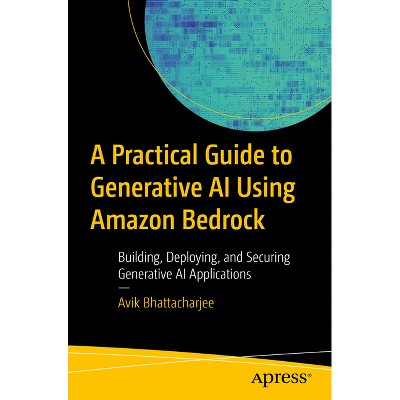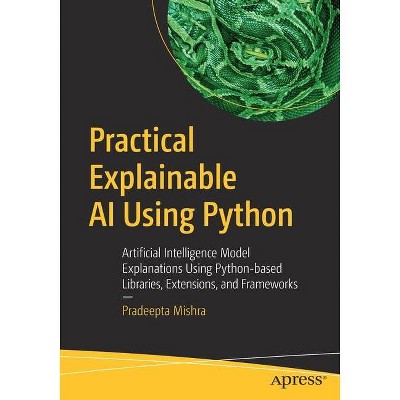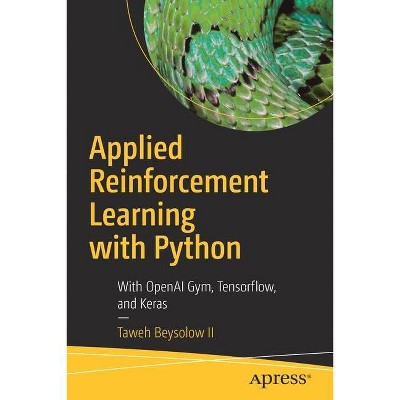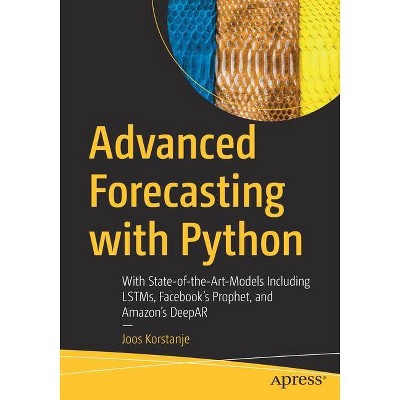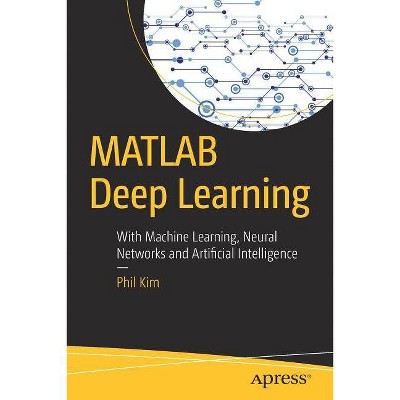Sponsored

Conceptual Variable Design for Scorecards - by Saul Rodrigo Alvarez Zapiain (Paperback)
In Stock
Sponsored
About this item
Highlights
- Embark on a journey through the intricate landscape of predictive modeling, where the fusion of conceptual clarity and robust statistical techniques creates powerful tools for decision-making.
- About the Author: Saul Rodrigo Alvarez Zapiain brings over two decades of diverse professional experience to his role as a principal analytical consultant at SAS.
- 720 Pages
- Computers + Internet, Intelligence (AI) & Semantics
Description
Book Synopsis
Embark on a journey through the intricate landscape of predictive modeling, where the fusion of conceptual clarity and robust statistical techniques creates powerful tools for decision-making. This book distills years of experience into a standardized methodology that empowers professionals across industries--from banking to telecommunications--to construct scorecards that predict outcomes with precision and confidence. In a world driven by data, the ability to transform complex information into actionable insights is paramount. This is your essential guide to mastering the art and science of model building. With practical examples, real-world case studies, and step-by-step guidance, this book is not just a resource--it's a roadmap to success in the rapidly evolving field of analytics. By focusing on reducing operational risk, you'll be equipped to make informed decisions that safeguard your organization's future. Whether you're a seasoned data scientist or just starting your journey, Conceptual Variable Design for Scorecards will provide you with the knowledge and skills to thrive in an era where data-driven decisions are the key to competitive advantage. Join the ranks of forward-thinking professionals who are redefining the future of risk management and predictive analytics. Your journey begins here.What You Will Learn
- Harness the power of conceptualization to create models that solve real-world problems. Design meaningful variables that reflect the behaviors of your target population. Expand variables with temporal patterns to capture trends and dynamic changes. Master data integration to streamline preparation and avoid common pitfalls. Implement a unified workflow to simplify and accelerate the modeling process. Explore a larger number of variables in your multivariable models by harnessing the use of experimental design and hyperoptimization.
Who This Book Is For
Professionals engaged in the practical construction of models who seek to gain a comprehensive understanding of the model-building process.
From the Back Cover
Embark on a journey through the intricate landscape of predictive modeling, where the fusion of conceptual clarity and robust statistical techniques creates powerful tools for decision-making. This book distills years of experience into a standardized methodology that empowers professionals across industries--from banking to telecommunications--to construct scorecards that predict outcomes with precision and confidence.
In a world driven by data, the ability to transform complex information into actionable insights is paramount. This is your essential guide to mastering the art and science of model building. With practical examples, real-world case studies, and step-by-step guidance, this book is not just a resource--it's a roadmap to success in the rapidly evolving field of analytics. By focusing on reducing operational risk, you'll be equipped to make informed decisions that safeguard your organization's future.
Whether you're a seasoned data scientist or just starting your journey, Conceptual Variable Design for Scorecards will provide you with the knowledge and skills to thrive in an era where data-driven decisions are the key to competitive advantage. Join the ranks of forward-thinking professionals who are redefining the future of risk management and predictive analytics. Your journey begins here.
You will:
- Harness the power of conceptualization to create models that solve real-world problems.
- Design meaningful variables that reflect the behaviors of your target population.
- Expand variables with temporal patterns to capture trends and dynamic changes.
- Master data integration to streamline preparation and avoid common pitfalls.
- Implement a unified workflow to simplify and accelerate the modeling process.
- Explore a larger number of variables in your multivariable models by harnessing the use of experimental design and hyperoptimization.
About the Author
Saul Rodrigo Alvarez Zapiain brings over two decades of diverse professional experience to his role as a principal analytical consultant at SAS. His journey began with a bachelor's degree in industrial biochemical engineering, followed by a master's degree specializing in mathematical modeling of cellular organisms. Having started his career in industries such as pharma, telco, and market research, Saul transitioned to analytics, and while working at Santander, he discovered data mining, sparking a continuous quest for knowledge in analytical domains.
Around 16 years ago, while working at Santander, Saul discovered data mining, sparking a continuous quest for knowledge in analytical domains. Over the years, he honed his skills through self-education and numerous SAS courses, earning over 10 certifications, including Certified Data Scientist and Certified Professional in AI, Machine Learning, and Data Curation. Delving into specialized statistical techniques, he developed a deep understanding of the modeling process. It wasn't until Saul was invited to present his expertise at a conference organized by the Customer Success division that he fully recognized his niche--building models. This realization, coupled with his wealth of real-life experiences, shaped his approach to analytics and problem-solving.
Shipping details
Return details
Trending Computers & Technology Books






